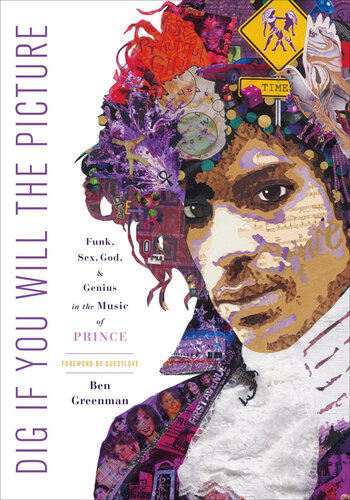
Dig If You Will the Picture
Funk, Sex, God and Genius in the Music of Prince
کتاب های مرتبط
- اطلاعات
- نقد و بررسی
- دیدگاه کاربران
نقد و بررسی

Starred review from April 3, 2017
Part fan’s notes and part cultural criticism, music journalist Greenman’s absorbing and entertaining study of Prince and his music compellingly underscores the Purple One’s enduring contributions to pop music. After he buys his first Prince album—1999—in 1982, Greenman becomes obsessed with the music, waiting anxiously at the local record store for every new album and discovering that Prince is, among other things, a “jazz-age sweetie, spiritual pilgrim, sexual puppeteer.” Greenman chronicles Prince’s life from his childhood up through the earliest moments of his career, but and he peers into the sources of Prince’s inspiration as well as the many themes that appear constantly in his music, such as sex, virtue and sin, and race and politics. Greenman also considers the reasons that Prince changed his name in 1993—in part as a ploy to retrieve his masters from Warner Brothers—and his frustration with the Internet as a method for delivering his music. Prince’s genius is on full display here as Greenman remarks on his prolific music virtuosity, putting out an album once a year, and his obsessive dedication to saving every little scrap of his writing and recording to use again. Greenman’s brilliant book celebrates a musician who crammed substance into every corner of his music.

March 15, 2017
A satisfying portrait, warts included, of the Purple One, one-time heir to the thrones of James Brown and Jimi Hendrix alike.Readers approaching a biography of Prince Rogers Nelson (1958-2016) are likely to take as a given that the subject was one of the great musical geniuses of history. If they are not, then New Yorker contributor Greenman--the as-told-to author of Questlove's well-received memoir Mo' Meta Blues (2013), among other nonfiction and fiction--is prepared to recite the artist's bona fides: from his breakthrough album of 1980, -Dirty Mind,- to the 1989 soundtrack to Batman, Prince -rarely if ever put a foot wrong,- and from -1999- to -Sign O' the Times,- a period including the definitive -Purple Rain,- he was -perfect, the equivalent of Bob Dylan from 1965 to 1969, the Rolling Stones from 1968 to 1972, Talking Heads from 1980 to 1985, or Public Enemy from 1988 to 1991.- Big shoes, all those, for the diminutive, sometimes-litigious, and decidedly eccentric artist to fill, but Greenman makes his case at leisure--and convincingly. Moreover, he notes, Prince remained an experimenter throughout, one of the great masters of the recording studio who had an archivist's talent for tucking away even the tiniest of musical scraps, for which reason we're likely to have Prince albums well into the future. Sometimes Greenman's enthusiasm melts into diffusiveness, as when he invokes the psychological theory of flow to discuss Prince's creative processes; sometimes it gets a little silly, as when, writing of Prince's household staff, he notes, -a pixie did his laundry and the universe, his will.- Still, the author avoids most of the worst cliches of music writing, and it's clear that he knows and appreciates music at large as well as his immediate topic. Likely not the definitive book on Prince, but certainly one that merits attention by fans and students of pop culture alike.
COPYRIGHT(2017) Kirkus Reviews, ALL RIGHTS RESERVED.

























دیدگاه کاربران